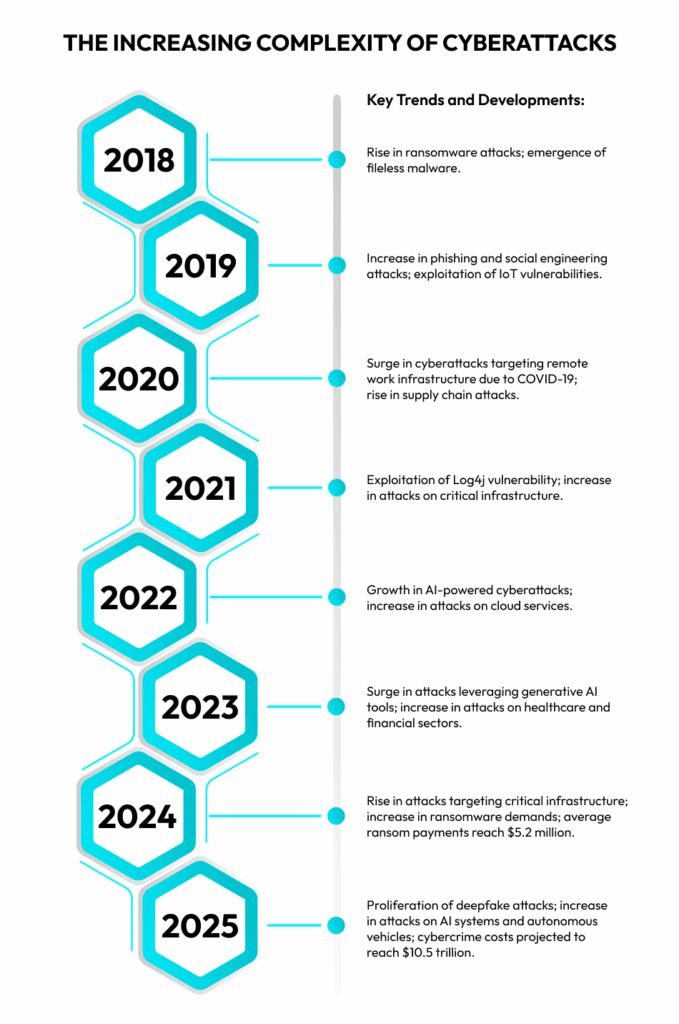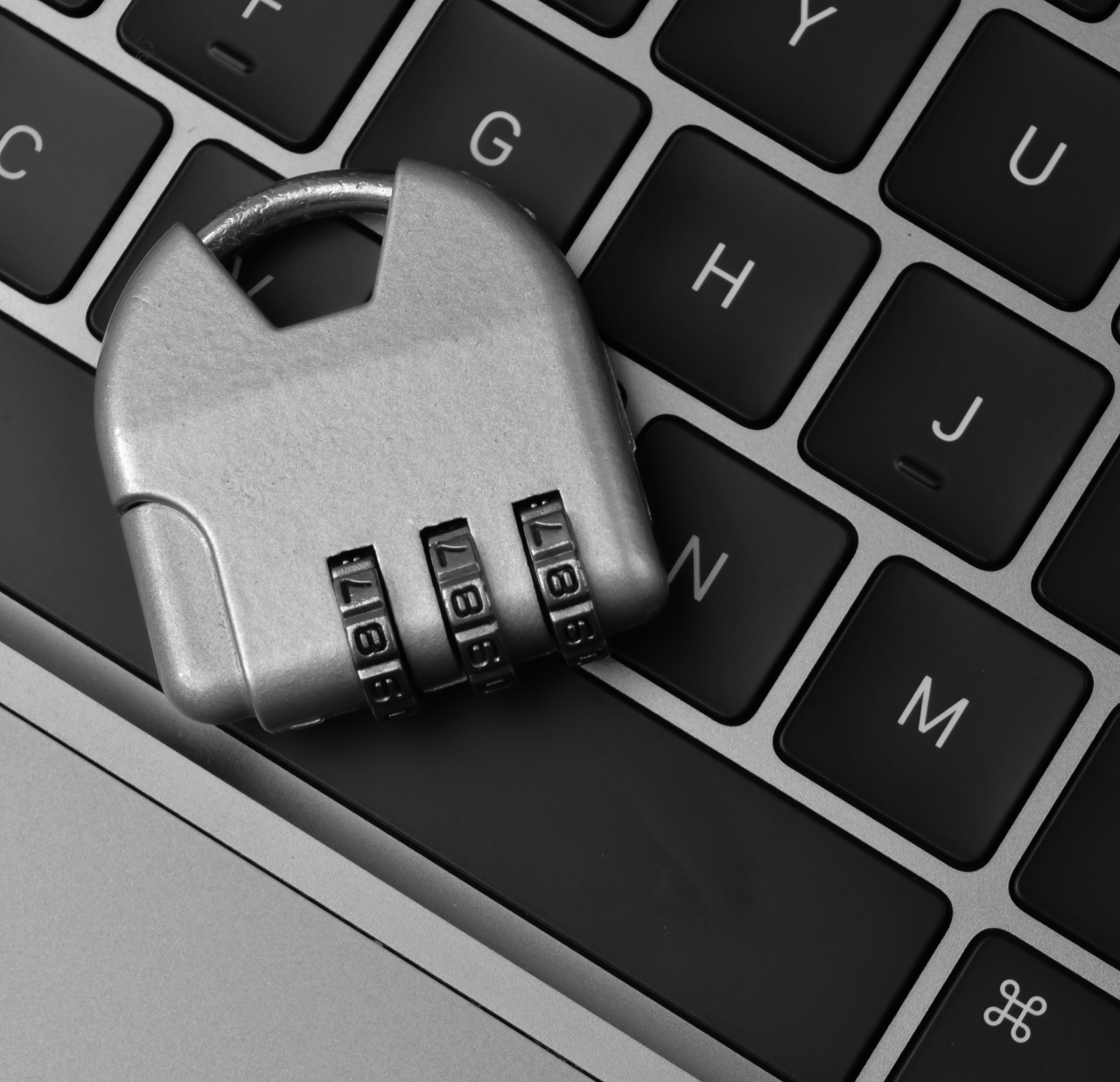This article begins by demonstrating how the CISO’s role in risk exposure management has evolved over the years, becoming what it is now—the role of a strategic business leader. This historical excursion will set the stage for understanding why CISOs are rethinking risk exposure in 2025.
You’ll learn the key factors affecting this process, along with the strategies CISOs use to address cybersecurity risk exposure. By the end of the article, you’ll gain a full understanding of CISOs’ current role and what they can do to overcome the challenges they face in implementing a successful risk exposure management program.
The Evolving Role of CISOs in Managing Risk Exposure
In cybersecurity, risk exposure refers to the possible financial, operational, and reputational damage your organization faces when internal or external malicious actors exploit vulnerabilities and other exposures.
Traditionally, the job of the Chief Information Security Officer (CISO) consisted of implementing technical controls and maintaining compliance to manage these risks. In that spirit, CISOs’ focus often revolved around preventing breaches through setting perimeter defenses, patching systems, and managing the security stack.
However, as the threat landscape and cybersecurity went through massive and rapid changes—cyberattacks became commonplace, cloud technologies were widely adopted, and businesses grew into intricate networks of digital systems—the nature and scale of risk exposure have turned its management into a Gordian knot.
These changes have dramatically reshaped CISOs’ responsibilities. They transformed them from primarily technical custodians to strategic business leaders. Modern CISOs must now possess a deep understanding of the organization’s business objectives and integrate security practices across all functions, from product development and sales to HR and legal.
This capability entails cultivating a security-first culture, promoting secure design principles, and collaborating closely with executive leadership to communicate the financial implications of cyber protection as well as cyber risk.
That means CISO’s role became one of proactive risk management that encompasses everything from threat intelligence to incident response planning to continuous evaluation and optimization of security postures vis-a-vis the hyper-dynamic business needs.

Why CISOs Are Rethinking Risk Exposure Management in 2025
It’s not just the scale, speed, and sophistication of new cyber threats. It’s also the lightning-fast adoption of new technologies like GenAI that affects the role of a contemporary CISO. In addition, there is the growing regulatory pressure demanding demonstrable cyber resilience across an unprecedented attack surface, along with high-pressure business dynamics.
The new conditions require a shift to measurable risk management that are integrated directly with business objectives.
The Shift in Cyber Threats
Cyberattacks have evolved from opportunistic attacks to highly organized, sophisticated, and targeted campaigns.
Ransomware has become one of the scariest threats endangering every industry, from healthcare to education to finance. It often employs multiple extortion tactics, involving both data encryption and exfiltration, and demands payouts counted in millions.
Phishing and its more advanced variant, spear phishing, remain pervasive initial access vectors, but vulnerability exploitation has also risen as one of the most common ways for ransomware to enter an IT environment.
Advanced Persistent Threats (APTs), often backed by nation-states, continue to pose a stealthy and persistent risk. Add to this their focus on espionage, intellectual property theft, and critical infrastructure disruption with extended dwell times on top of the current complex geopolitical landscape, and you know CISOs’ hands are full of unprecedented pressure.
This shift in threat vectors and adversary sophistication simply calls for a fundamental rethinking of risk exposure management strategies in 2025.
Traditional perimeter-based defenses are no longer sufficient against adaptive and AI-augmented attacks. CISOs must adopt a markedly proactive, intelligence-driven, and risk-aligned approach, moving beyond compliance checkboxes.
That step toward proactive security entails a focus on continuous threat exposure management (CTEM), cyber resilience, and security-by-design principles. And it must include the entire attack surface, meaning the software supply chain, legacy systems, and cloud environments, to counter the growing challenges effectively.
Regulatory Pressures
A growing and complicated web of regulatory requirements increasingly shapes CISOs’ risk exposure management efforts.
The CCPA in the US and GDPR in Europe have set stringent precedents for data privacy and security. They mandate clear consent, tested-and-proven data protection measures, and strict breach notification timelines.
Beyond these two, there’s a patchwork of additional regulations and standards, such as HIPAA (healthcare); PCI-DSS, DORA, and NIS2 (finance); and the EU AI Act, NIST AI Risk Management Framework, and other emerging frameworks for AI governance. Each of them adds a new layer of complexity and demands regarding security controls and accountability.
In response, CISOs are embedding regulatory adherence deeply into their overall risk exposure management strategies. Their efforts include applying:
- Comprehensive data mapping and classification to understand where sensitive data resides and how to protect it best under the given circumstances
- Privacy-by-design principles from the outset of new projects
- Continuous monitoring of the quickly changing regulatory terrain
- Automation and data analytics to streamline compliance efforts, improve audit readiness, and identify gaps before a disaster happens
All these initiatives help them transform regulatory pressures from a burdensome obligation into a strategic driver for enhancing their organizations’ overall cyber resilience and trustworthiness.
Accelerated Business Dynamics
The quick adoption of cloud computing, DevOps methodologies, agile development, and AI-powered processes means that organizations are deploying new applications, services, and functionalities at an unparalleled pace.
This speed may be necessary for a competitive advantage. Nonetheless, it drastically compresses the time available for security assessments. It inadvertently introduces countless new variables and unknowns, and with that, a greater exposure.
Consequently, CISOs are, practically, forced to transition from periodic, reactive security measures to integrated, automated, and continuous security practices. This “forced” may not be as bad as it sounds. The new proactive path allows security teams to keep pace with the businesses’ relentless innovation cycles, making sure that security is perceived as a business enabler rather than a bottleneck.
Key Strategies CISOs Are Using to Address Risk Exposure in 2025
Navigating the contemporary volatile cyber terrain requires a strategic change in how organizations approach cybersecurity. To move from traditional reactive measures to building business-aligned security postures, CISOs are deploying a few key strategies addressing the universally heightened risk exposure.
Embracing Proactive Risk Exposure Management
We’ve already touched upon the topic of proactive security, an important part of what CISOs must do today to keep pace with vastly changed cyber, regulatory, and business conditions. But what does proactive security mean?
Proactive security’s primary goal is prevention, meaning anticipating and mitigating threats and cyberattacks before they materialize. But, as much as full prevention is the most desirable outcome, it’s an unrealistic expectation. Hence, besides prevention, proactivity also includes building capabilities for prompt or early detection and response.
Key initiatives that allow CISOs to achieve these goals include:
- Threat intelligence: Gain insight into adversary tactics, techniques, and procedures (TTPs) to enable more informed defensive postures.
- Automated incident response playbooks and SOAR platforms: Reduce detection-to-response times.
- Risk assessment and forecasting: Evaluate the likelihood and impact of threat actors exploiting the discovered exposure and specify acceptable risk levels. Use data analytics and predictive modeling to foresee future vulnerabilities and attack vectors.
- Exposure and vulnerability management: Remediate security weaknesses in operating systems, applications, and networks as effectively and efficiently as possible.
- Security awareness training: Teach employees about security risks, best practices, and suspicious activities like phishing.
- Offensive security: Simulate or emulate realistic cyberattacks with the purpose of identifying and fixing demonstrably exploitable weaknesses before malicious actors exploit them in the wild.
The Role of Artificial Intelligence and Automation
There’s hardly a better way to confront the scale and speed of modern cyber threats than to use AI and automation, and that’s why CISOs are increasingly making good use of their power.
AI and ML engines’ ability to sift through enormous datasets of security logs, network traffic, and threat intelligence is unparalleled. It’s the simplest way to identify subtle patterns and anomalies pointing to threats and indicators of compromise that human analysts might miss.
This capability allows for the prediction of likely attack vectors, early detection of sophisticated malware, and the finding of exploitable misconfigurations.
Moreover, automation, often driven by AI, enables swift, machine-speed responses to the discovered threats. It can block malicious code, isolate compromised systems, or trigger security playbooks in milliseconds. It can be the driving force in minimizing the window of opportunity for hackers and mitigating risk exposure before attack attempts materialize in the form of full-blown security incidents.
Integration with Business Objectives
Cybersecurity has moved far beyond its traditional understanding as a purely technical IT function. In one way or another, mostly when a fatal attack strikes and the entire business comes to a halt, it has become clear to many organizations that security is an indispensable element of business strategy.
That has inevitably affected CISOs’ role. They are now embedding security considerations into every facet of organizations’ objectives, from product development and market expansion to digital transformation initiatives. This strategic integration has CISOs working closely with executive leadership—CEOs, CFOs, and heads of business units—to translate technical cyber risks into clear business impact.
Only by aligning security with company goals—enabling secure innovation, protecting user data and, with that, customer trust, ensuring regulatory compliance, and maintaining operational continuity—can CISOs communicate the value of their security requirements and investments. An adequate budget and a prevalent security-conscious culture that supports the organization’s resilience and competitive advantage are a direct result of this alignment.
Challenges CISOs Face in Rethinking Risk Exposure Management
New times bring new opportunities but also fresh challenges. In parallel with the opportunity to rethink and redefine risk exposure management in 2025, CISOs are facing several major challenges in their mission to success.
Budget Constraints and Skill Shortage
Budgets have always been a frustrating hurdle for security teams and CISOs. Resource limitations constrain their ability to implement critical security advancements and fully functional security plans. They directly influence the acquisition of top-notch technologies, such as advanced AI-driven mitigation or refined threat intelligence, and turn even foundational necessities, like realizing a full-fledged exposure management program, into a constant struggle of prioritization and compromise.
The persistent cybersecurity talent shortage makes a bad situation even worse. Even with an approved adequate budget, recruiting, training, and the ability to retain skilled personnel capable of managing complex systems, putting preventive measures in place and responding to cyberattacks is still a challenge.
This lack of a suitable budget and in-house expertise can delay or entirely derail the deployment of risk exposure management strategies. It leaves organizations vulnerable and curbs the very proactive stance CISOs aim to achieve.
An Expanding and Permeable Attack Surface
Today’s expanding and permeable attack surface is a direct consequence of modern business dynamics.
The quick adoption of cloud environments, the proliferation of IoT and operational technology (OT) devices, the widespread shift to hybrid work models, and countless third-party integrations and dependencies have all increased the number of entry points for adversaries.
This continuous expansion of the attack surface makes it harder to get a clear, unified view of risk exposure. It’s typically coupled with a lack of asset and connection visibility, creating a highly porous digital perimeter that is extremely difficult to secure and protect.
Data Overload
The sheer volume of data generated by tool stacks, digital systems, and intelligence feeds leads to data overload and threat prioritization paralysis.
Security operations centers (SOCs) may be flooded with millions of alerts daily, many of which are just noise, false positives, or low-priority events. Scouring this deluge of data to find actual threats and critical vulnerabilities is a monumental task. It’s no surprise that alert fatigue and missed indicators of compromise have become such a big concern.
Allocating limited resources to address the most impactful threats requires the support of automation and a mitigation-first approach to make life easier for CISOs.
Legacy Software and Technical Debt
Too many organizations still operate with older, outdated software that was not built with modern security principles in mind. These systems often have known vulnerabilities, are difficult or impossible to patch, and may not support contemporary security controls or integrations.
On top of this, CISOs are facing accumulated technical debt. These are shortcuts taken in past development cycles to meet deadlines or budget constraints. They might have expedited development, but they quite often result in insecure code, fragile architectures, and complex maintenance issues, contributing even further to the expansion of the attack surface.
Modernizing these environments is a difficult and costly undertaking. It requires substantial time, resources, and planning, which directly interferes with the need to promote a new, proactive approach to risk exposure management.
Relentlessly Evolving Attack Techniques
Adversaries never stop finding ways to circumvent defenses. They rely on AI to launch social engineering attacks with convincing lures and deepfakes, develop adaptive malware that mutates to bypass detection, and employ refined fileless and living-off-the-land techniques that take advantage of legitimate system tools.
The proliferation of as-a-service ransomware models and easily accessible offensive open-source tools, originally developed for red teaming and penetration testing purposes, further lowers the barrier to entry for cybercriminals. All this means that CISOs must deal with a mushrooming pool of threat actors using more and more stealthier and innovative methods to breach their IT environments.

Proactive Management to Counter Risk Exposure
No doubt, CISOs face complex and multifaceted challenges in 2025. This predicament demands a shift from traditional paradigms to markedly proactive risk exposure management.
As cyber threats grow in every possible sense, compliance regulations become more numerous and complicated, and business dynamics become exceptionally demanding, the CISO’s role has clearly become a strategic one.
To meet this role’s requirements, CISOs must continuously integrate security with business objectives. A wise inclusion of new and advanced security technologies fueled by AI, such as Virsec’s OTTOGUARD.AI, can greatly support this process.
Book a demo to experience proactive security through workload patchless mitigation. See what it means to do exposure management right.
FAQ Section
The main challenges CISOs face in managing risk exposure are the growing sophistication, speed, and scale of cyber threats; expanding, complex, and permeable attack surface; increasing regulatory burden; restricted budget and talent; and legacy software coupled with technical debt.
AI can analyze copious amounts of data for subtle anomalies, help predict attack vectors, automate real-time threat response, and support human capabilities to achieve a more resilient security posture.
This alignment is necessary to transform security from a perceived cost center into a strategic business enabler. That’s the path for CISOs to secure sufficient budgets, receive the green light for suitable technology investment, break silos, and build a security-first culture across the whole company, contributing to the organization’s trust, reputation, and competitive advantage.




